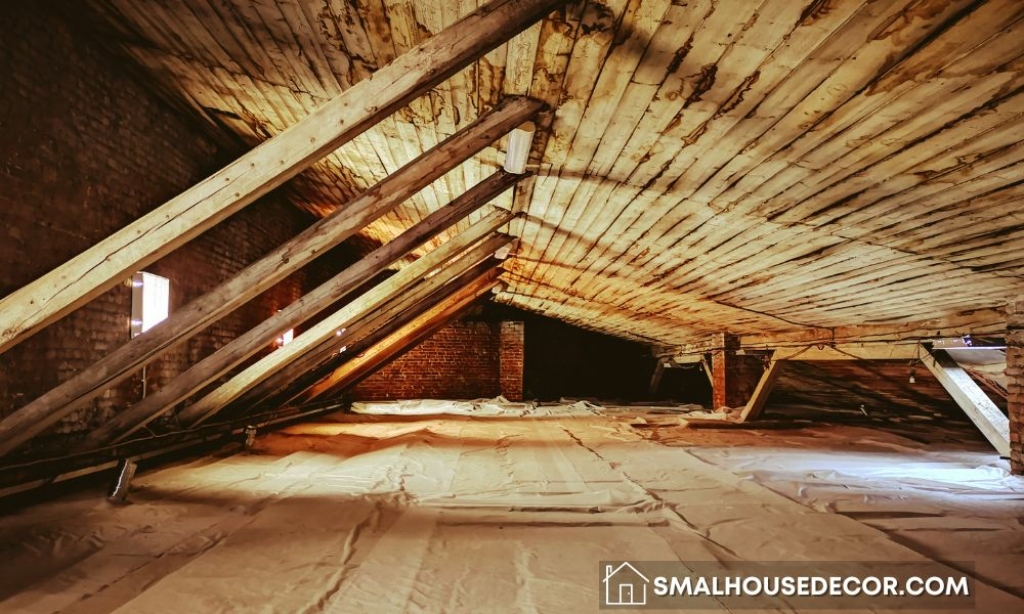Most of the time, homeowners have no idea they need attic mold removal until the infestation has spread into a full-blown outbreak. While mold in the attic can go undetected for a while, it’s a problem that many property owners throughout the city face.
Long winters and humid summers contribute to a year-long problem that can plague property owners until there is intervention with mold remediation in Toronto from a certified restoration company.

Why Does Attic Mold Detection Matter?
Despite its silence and ability to go unnoticed, attic mold is a threat to the integrity of a property and hazardous to the health of those who inhabit it. Checking for infestations with professional mold inspections and testing, helps identify the source of an outbreak and the extent of its infestation, empowering you and restoration technicians to develop the best plan for mold remediation in Toronto.
When mold lingers in the attic, mycotoxins quickly infiltrate the air compromising indoor air quality. As the colonies grow more substantial and the toxins more prominent, exposure to the air leads to physical illness. Depending on the species of mold in your attic, the speed of mold sickness and the associated symptoms may vary, but the results can be severe in many cases.
Signs You May Have an Attic Mold Problem
Before you can schedule attic mold removal in Toronto, you must first be able to identify the potential for a problem. As infestations grow, mold sends some signals that homeowners should keep in mind. If any of the following are observed, it’s best to proceed with professional attic mold inspections and removal.
- Visible Mold Indicators: Since most people don’t spend much time in the attic, recognizing the visible presence of mold is a more of a challenge. But as infestations fester and grow larger, mold spores spread throughout the property, which may lead to you seeing mold in other areas of the house. Look at the ceiling and walls of the top floor for sporadic stains. Mold will usually appear in dark greens, blacks, greys, and even yellow on organic materials like drywall, wood, and even carpet in velvet or fuzzy texture.
- Odour-Related Signs: The most apparent early indication of attic mold is its infamous odour, often described as pungent, musty, or earthy. When you can’t see mold but can smell it infiltrating your airspace, there’s a good chance you’re dealing with attic mold. To confirm, contact experienced mold remediation experts in Toronto to confirm.
- Physical Symptoms: As mentioned, mold in the air has been directly connected to changes in physiological wellness. If you or any other occupants in your home notice an unexplained onset of allergy-like symptoms like coughing, sneezing, rashes, or eye irritation, there could be a festering mold outbreak in your attic. Those symptoms may intensify as exposure continues, resulting in headaches, nausea, brain fog, and forgetfulness. Mold sickness may look like a cold or allergies but will typically not subside until after mold remediation in Toronto.
- Water Damage: More often than not, leaks, flooding, burst pipes, and other water damage incidents are the catalyst for attic mold. Mold infestations occur within just 24-48 hours after water intrusion. A simple tear in the roof structure can trigger water intrusion, making your home a breeding ground for mold. If you know you’ve suffered a leak, schedule a mold inspection immediately.
Also Read: How to Convert Your Attic
Tips for Managing Attic Mold
Once mold comes around, eliminating it can be a challenge without professional intervention. On non-porous surfaces, do-it-yourself mold removal sprays may work temporarily to subside the onset of mold, but in the attic, this approach is not possible.
The abundance of organic material in the form of wood, drywall, and insulation is incredibly susceptible to mold and DIY removal methods can leave your attic worse off. To ensure that attic mold is completely neutralized, contact a professional for mold remediation in Toronto. Using advanced techniques, industry-leading technology, and expertise, experienced mold specialists will identify and eliminate all instances of mold in your attic and around your home.
Keep Mold from Coming Back
Mold is a challenge, so once it’s gone, it’s best to do everything you can to keep it from returning. Start by monitoring moisture in your home by running the air conditioning in the summer and using a hygrometer to measure humidity levels.
The recommended indoor humidity levels range between 20-50%, if your readings exceed those levels, consider leveraging dehumidifiers to reduce moisture. You should also maximize attic ventilation to keep spores cycling out of your property. Blocked or insufficient ventilation traps spores facilitate their development into colonies and, ultimately, property-wide outbreaks.
Don’t let attic mold make you sick. Protect yourself and your property with professional attic mold removal.